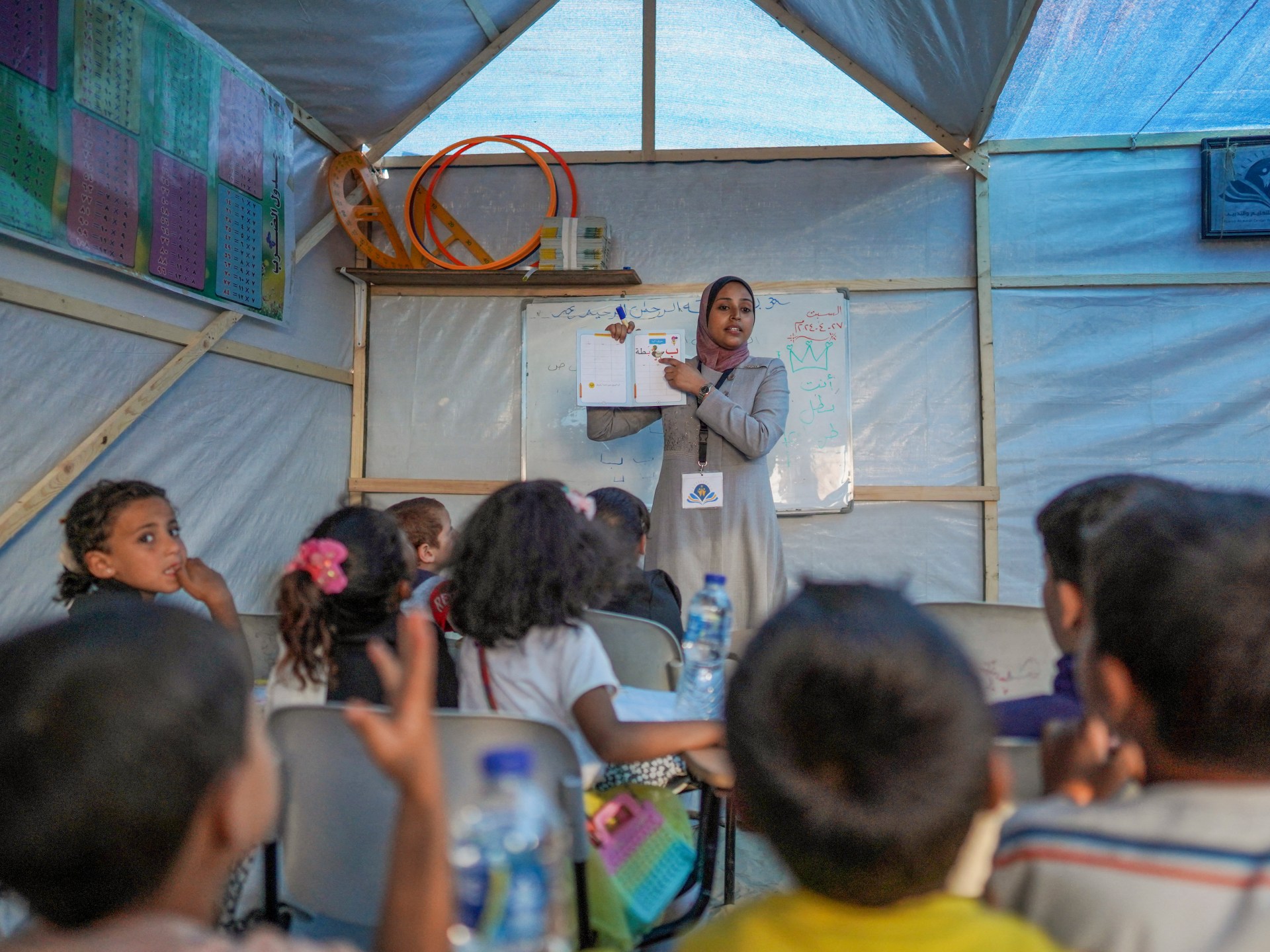I had a variety of conflicting emotions when the Gaza ceasefire was declared. I was relieved that the bombs had finally stopped, but I also feared that they could go back on at any time. I was worried that this might return to normal life, but I also worried that it might be a temporary one.
As a teacher of English, I want to see education as quickly as possible. The only way to revive hope and assist children in overcoming the trauma of two years of genocide is through education. It can give the impression of purpose and normalcy. That is why Gaza should have the highest priority.
I taught English to elementary and middle school students in Gaza City before the genocide started. In the first weeks of the war, the school was completely destroyed, and the educational facility suffered severe damage.
We had to leave our home, along with my family. I began teaching in a tent a few months later as part of a volunteer-run initiative at the local school. My students, who ranged in age from six to twelve, were seated on the floor in the tent without desks. Although the teaching environment was challenging, I made a commitment to supporting children in their education.
By the late December of that year, all pens, books, and notebooks had completely vanished from stores and markets. If there was any money available, a single notebook would cost anywhere between 20 and 30 shekels ($6 to $9). The majority of families were unable to afford this.
Some of my pupils started arriving at class without anything to write on, others would pick up scraps of paper from the rubble of homes and proceed with it, and others would continue to write in pennies on the backs of their families’ preserved old sheets of paper. Many children would frequently have to share a single pen because pens were so scarce.
We educators had to find alternative teaching methods because writing and reading, the foundation of education, became so challenging. We performed songs, heard stories, and group recitations.
Children had an incredible desire to continue learning despite the lack of resources. I was moved by their determination to learn despite everything, and I was moved by their perseverance as I saw them struggle with old scraps of paper.
Years ago, my grandmother gave me a special notebook that I used as a diary. My dreams and secrets were included in it. After the war, I began to read accounts of bombings, homeless people sleeping in the streets, starvation never before, and suffering without even the most basic necessities.
I was aware of what I had to do on a particular August school day when the majority of my students showed up without a single paper. I gave my students the pages of my notebook as I began tearing them out one by one.
My notebook’s pages ran out in a single day due to the number of children in it. Then, my students had to return the paper or cardboard scraps.
My students are still without paper and pens despite the truce putting an end to the bombs. Humanitarian aid has once more begun entering Gaza. Shelter supplies, food, and supplies are arriving. All of these are crucial. However, we also urgently require funding for the 600,000 schoolchildren in Gaza to get back on track.
Not just textbooks, pens, and paper are available. They provide a lifeline to Gaza’s children who have overcome war, destruction, and great loss. They are essential tools for their willpower and perseverance to live, learn, and envision a bright future.
With the aid of education, children can recover from war trauma and regain sense of security. For both community healing and psychological rehabilitation, learning provides them with the structure, self-assurance, and hope for a brighter future.
We must re-advocate for those who lost two years of education with the ability to write, study, and dream.
Source: Aljazeera

Leave a Reply